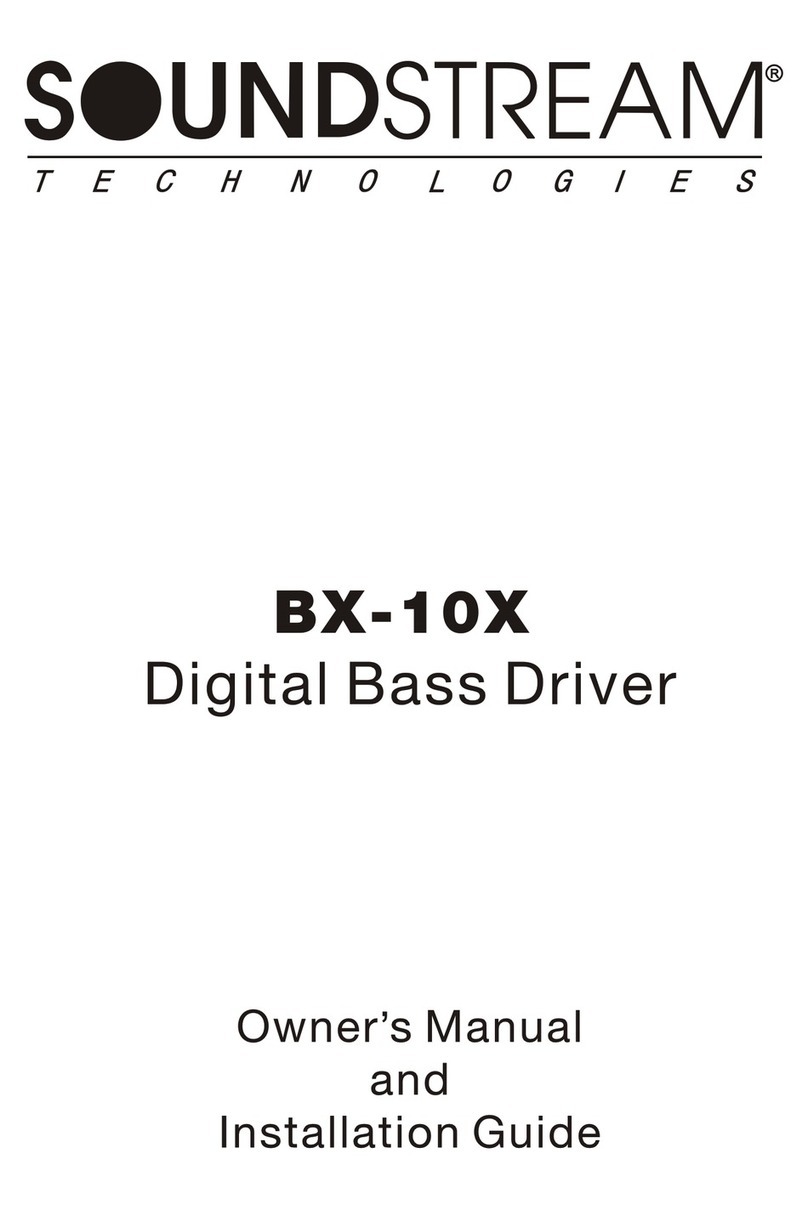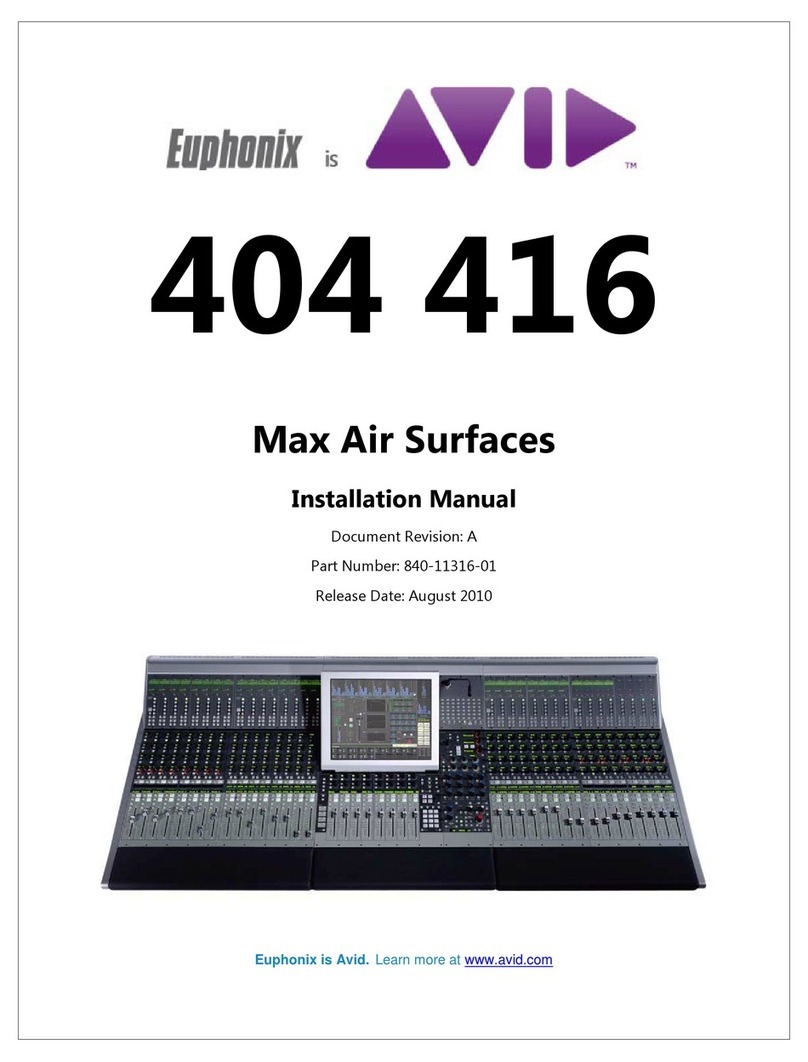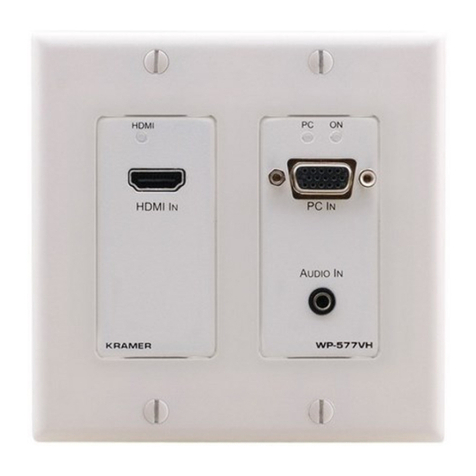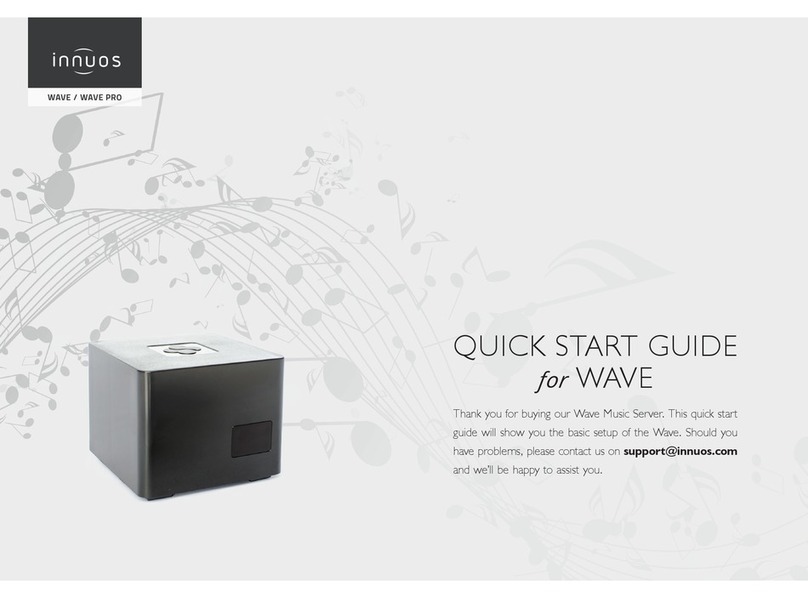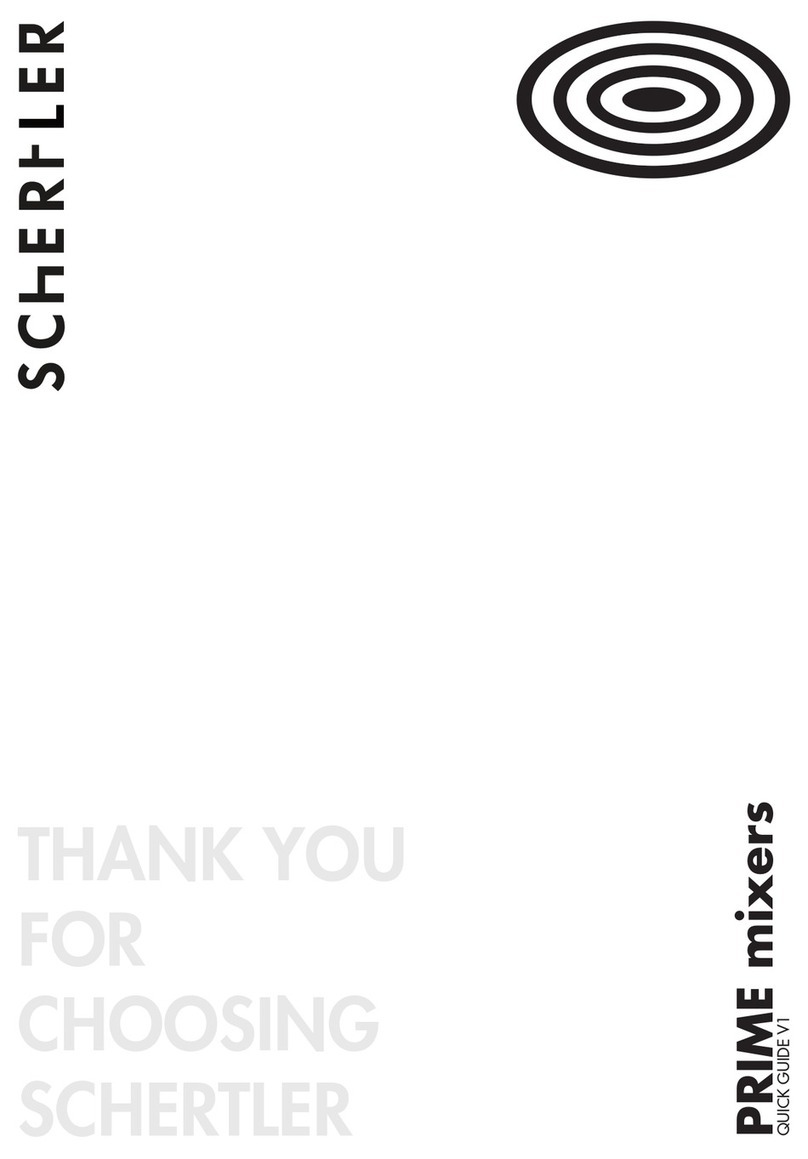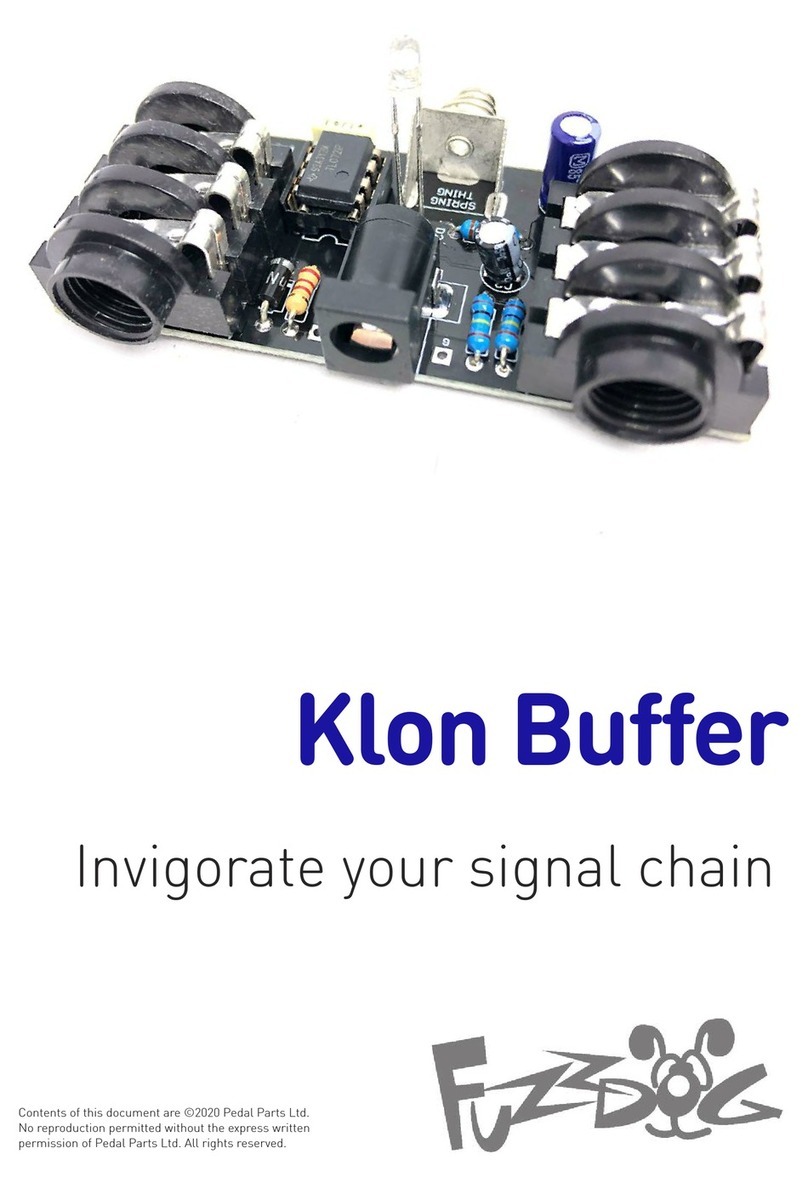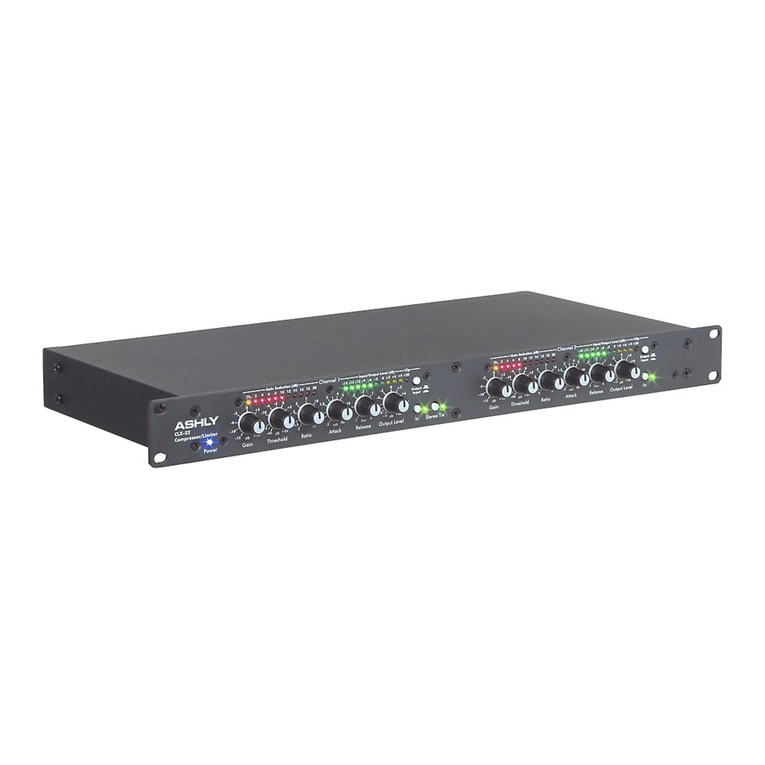boytone BT-17DJ User manual

MODEL: BT-17DJ
Operating Instructions
Manual

Contents
03
Warranty Details
04
Welcome
05
General Safety Instructions
07
Parts List
09
Getting Started
10
Features
11
Instructions
20
FAQs
General Safety Instructions
Read this manual thoroughly before first use and keep it in a safe place for future reference, along with
the completed warranty card, purchase receipt and carton. The safety precautions enclosed herein
reduce the risk of fire, electric shock and injury when correctly adhered to.
Follow all instructions and take notice of all warnings to reduce the risk of fire or electric shock.
Electrical safety and cord handling
• Before installing this equipment, make sure your outlet voltage corresponds to the voltage stated on the
appliance rating label.
• To prevent contact with high voltage components inside, do not attempt to open the equipment.
• When connecting the equipment, align the plug properly and insert it fully to prevent electric shock.
• Only use this equipment with the cord and plug supplied, and do not overload the power outlet.
• If the power cord is damaged, do not use the equipment. The cord must be replaced by the
manufacturer or similarly qualified personnel in order to avoid a hazard. Contact the after sales support
line for advice.
• CAUTION: To reduce the risk of fire or electric shock, do not expose this equipment, the power supply
cord and plug to rain or moisture; do not use it anywhere near water or where water splashes or drips;
do not touch the power plug with wet hands. In the event that water or other liquids enter the device,
unplug the unit immediately and clean and dry it as best as possible. Then have it checked for damage
by a qualified technician. Contact the after sales support line for advice.
• Do not repair the unit yourself. Only have it serviced by qualified personnel. Contact the after sales
support line for advice.
• Unplug the unit from the power outlet after use to avoid possible damage during electrical storms, or
when the equipment will be unattended or unused for a long period of time.

• Do not let the cord hang over the edge of a table or counter, or touch any hot surface. Do not allow
anything to rest on or roll over the power cord, and run any cords so that no one steps on or trips over
them.
• Do not run the cord near heat-producing appliances such as radiators, stoves or irons. The excessive
heat could melt the insulation and expose live wires.
• Always grasp the plug, not the cord, when disconnecting the unit. Pulling the cord can damage the
internal wires and may cause a fire.
Installation
• When installing the unit, make sure to place it:
• Away from heat sources, radiators or other products that produce heat.
• Away from areas with high temperatures, high humidity or direct sunlight.
• Away from excess dirt and dust.
• Away from open windows and any place where water may get into the unit and damage it.
• Make sure there is free circulation of air around the unit. Do not place it on a thick carpet, bed or any
place where ventilation holes are obstructed. Leave at least 10cm clearance around the unit.
• Make sure the mains socket is readily accessible at all times.
Usage conditions and restrictions
• Openings on the cabinet are provided for ventilation and to protect the unit from overheating. To ensure
proper operation, do not cover them with things such as newspapers, tablecloths, curtains etc.
• Do not place heavy objects on top of the equipment or step on it.
• Do not place objects filled with water (such as vases) or any naked flame sources (such as lit candles,
incense sticks or cigarettes) on top of the unit.
• The equipment is not intended for use by persons (including children) with reduced physical, sensory or
mental capabilities, or lack of experience and knowledge, unless they have been given supervision or
instruction concerning use of the appliance by a person responsible for their safety.
• Young children should be supervised to ensure they do not play with the equipment. Close supervision
is always necessary when an appliance is used by or near children.
• Unplug the unit from the power outlet before cleaning.
• Clean the unit only with a dry, clean cloth. Do not use liquid or aerosol cleaners.
• We assume no liability for any damage caused by non-compliance with these instructions or any other
improper use or mishandling of the equipment.
Parts List

1 Dust cover
2 Mode (USB/SD)
3 Record button
4 Radio band selector (AM/FM/FM-Stereo)
5 Function selector
6 Auxiliary input
7 Delete button
8 3.5mm headphone socket
9 Program button
10 USB port
11 LC display
12 Power LED indicator
13 Play/Pause button
14 Stop button
15 Volume knob
16 Tuning knob
17 Skip up button
18 Skip down button
19 SD/MMC card slot
20 Right speaker
21 45 rpm adaptor
22 Lift lever
23 Auto stop control
24 Speed selector (33/45/78 rpm)
25 Tone arm
26 Cassette player
27 Line out sockets
28 FM wire antenna
29 AC power cord


Getting Started
Before first use
• Remove all packaging and protective materials from the appliance and dispose of them responsibly.
Plastic wrapping can be a suffocation hazard for babies and young children, so ensure all packaging
materials are out of their reach.
• Inspect the cord and plug for damage or wear before each use. Do not use the equipment if it or its cord
have been damaged or are not working properly.
• Read all instructions in this manual and make sure you understand all warnings.
• Refer to the Parts List on pages 7 to 8 to familiarise yourself with the product and identify all parts.
Installation
• Do not connect the unit to the mains before checking the mains voltage and before all other connections
have been made.
• Do not cover any vents and make sure that there is a space of several centimetres around the unit for
ventilation.
Caution!
Usage of controls or adjustments or performance of procedures other than those specified in this manual
may result in hazardous radiation exposure. This unit should not be adjusted or repaired by anyone
except qualified service personnel.
In case of damage, or if service or repair is required, contact the after sales support line for advice.
Connections
• Connect the power cord to a properly earthed AC outlet.
• Move the function selector. The backlight on the LC display should light up, indicating the power supply
is working properly.
• Your USB Turntable with Cassette Deck and Radio is now ready for use.
• To connect a headphone to this equipment, use a 3.5mm headphone jack and plug it into the socket at
the front of the equipment.
• To connect an external device (e.g. amplifier or speaker), use the LINE OUT sockets at the back of the
equipment.\
Features
Features
• Variable turntable speed (33, 45, 78 rpm)
• Automatic/manual stop turntable
• Belt-driven system
• Slot-in cassette player
• Direct USB/SD encoding for turntable, cassette and auxiliary input
• Auxiliary input for connection of other device (e.g. CD player or MP3 player)
• USB/SD slot for MP3 playback

• Copying files/tracks from USB to SD
• Deleting files/tracks on USB and SD
• Digital read-out analog AM/FM radio
• 45 rpm adaptor included
• LCD display with blue backlight
• RCA line-out
• Built-in speaker with 2 x 1.5W output
Instructions
Listening to radio
Radio tuning
1. Turn the volume knob in a clockwise direction to turn the equipment on.
2. Use the function selector to select TUNER mode.
3. Use the radio band selector to select the desired band (AM, FM or FM-Stereo).
4. Turn and hold the tuning knob for a few seconds to tune into a radio station. The unit will start
searching automatically and stop when a radio station is found. Release the knob once a station has
been found.
5. Repeat the above step until your desired radio station is found.
6. Adjust the volume knob to your desired volume level.
7. AM reception: the receiver has a built-in AM bar antenna. If reception is weak, slightly rotate or
reposition the unit to improve AM reception.
8. FM reception: the receiver has a built-in FM wire antenna hanging at the rear cabinet. For best
reception, completely unravel and extend this wire.
9. When you have finished listening to the radio, turn the volume knob in a counterclockwise direction to
switch the unit off. Unplug it from the power supply if you are not going to use it for a while.
FM and FM-stereo mode
• FM mode: use the radio band selector to select the FM band. Programs are received in mono mode.
Use this mode when stereo reception is weak.
• FM-Stereo mode: use the radio band selector to select FM-ST for receiving stereo programs. Once a
stereo signal is received, the ST icon will light up on the display.
The record player

IMPORTANT!
When using the turntable:
• Make sure to remove the stylus protector, as illustrated on the right. (It should easily slide off the stylus
assembly.)
• Make sure to unclip the tone arm lock before use and to secure it again after use.
Playing a record
1. Open the dust cover and turn the volume knob clockwise to turn the equipment on.
2. Use the function selector to select PHONO mode.
3. Set the speed selector to the appropriate position: 33, 45 or 78, depending on the record to be played.
4. Set the auto stop control to ON if you want the turntable to stop turning when it has reached the end of
the record. If the switch is set to OFF, the turntable will continue turning at the end of the record.
5. Place the record on the turntable (use the 45 rpm adaptor, if required).
6. Move the lift lever towards the back to raise the tone arm from the arm park, then slowly move the arm
to the record, as illustrated on the right. The turntable will start rotating.
7. Move the lift lever towards the front, the tone arm will gently drop onto the record and playback will
start.
8. To stop playback, move the lift lever towards the back to raise the tone arm. The turntable will still be
rotating but the record will stop playing. To continue playback, move the lift lever towards the front.
9. To play a different piece on the record, move the lift lever towards the back, move the raised tone arm
to the start of the piece and then move the lift lever towards the front to lower the tone arm and start
playback.
10. To adjust the volume level, turn the volume knob to the right or left.
11. At the end of the record, move the lift lever towards the back to raise the tone arm and move it back to
the tone arm park, and then move the lift lever towards the front to lower the arm onto its rest.
12. Alternatively, lift the tone arm off the record and return it to the arm rest manually.
13. When you have finished playing records, engage the tone arm lock to protect it from accidental
movement. Turn the volume knob in a counterclockwise direction to switch the unit off. Unplug it from the

power supply if you are not going to use it for a while.
NOTE: Should your record stop before the last track finishes, set the auto stop control to OFF. Your
record will now play to the end, but you will have to stop the turntable rotation manually. (Return the tone
arm to its rest manually and if the turntable is still rotating, switch off the unit by the volume control knob.
Then set the auto stop control back to ON.)
Phono encoding
1. Set the function button to PHONO mode and then insert a memory device (USB drive, SD or MMC
card).
2. Put your record onto the turntable and get it ready for playback.
3. Press the record REC button. It will take about 3 - 4 seconds to read the memory device, then the USB
or SD icon will be flashing on the LC display.
4. Press the skip up or skip down button to select the desired mode (USB or SD) for encoding, then press
the record REC button again to confirm.(You can skip this step if only a USB drive or an SD/MMC
card is inserted.)
5. The system will start the encoding mode after a few seconds.
6. Lower the tone arm to start playback of the record. During encoding, the USB or SD icon will be
flashing on the display.
7. To finish encoding, press the stop button. The display will show “END” and return to PHONO mode.
NOTE:
• The recording speed is 1:1. Recording will take as long as playing the record.
• The recording format is preset at MP3 bit rate 128 kbps.
The cassette deck
IMPORTANT!
When using the cassette deck:
• Make sure to insert the cassette in the correct direction.
• To avoid damaging the cassette, we strongly recommend taking it out of the equipment after playing the
cassette.

Playing a cassette
1. Turn the volume knob clockwise to turn the equipment on.
2. Use the function selector to select TAPE/AUX mode.
3. Insert a cassette with the tape facing away from you, as illustrated on the right. The EJECT/FAST
FORWARD button will pop out and the system will start playing the tape automatically.
4. Turn the volume knob to your desired level.
5. To fast forward the cassette tape, press the EJECT/FAST FORWARD button halfway down while the
cassette is playing. The tape will be advanced forward rapidly.
6. To resume normal playback, slightly press the EJECT/FAST FORWARD button again. The button will
fully pop out again.
7. To stop playback, press the EJECT/FAST FORWARD button completely. Playback will be stopped and
the cassette tape will be ejected.
Cassette tape encoding
1. Set the function button to TAPE/AUX mode and then insert a memory device (USB drive, SD or MMC
card).
2. Press the record REC button, it will take 3 - 4 second to read the memory device, then the USB or SD
icon will be flashing on the LC display.
3. Press the skip up or skip down button to select the desired mode (USB or SD) for encoding, then press
the record REC button again to confirm.(You can skip this step if only a USB drive or an SD/MMC
card is inserted.)
4. The system will start the encoding mode after a few seconds. Insert your cassette into the playback
slot. During encoding, the USB or SD icon will be flashing on the display.
5. To finish encoding, press the stop button. The display will show “END” and return to TAPE/AUX mode.
NOTE:
• The recording speed is 1:1. Recording will take as long as playing the cassette.
• The recording format is preset at MP3 bit rate 128 kbps.

The auxiliary input
Listening to a CD (or other auxiliary input)
1. Turn the volume knob clockwise to turn the equipment on.
2. Use the function selector to select TAPE/AUX mode, then connect the external audio device (such as
a CD player) to the AUX IN socket at the front of the equipment. The audio signal from the external
audio device will now be played through the system.
3. If an external audio device is connected to the AUX IN socket, playing of the auxiliary device takes
priority over cassette playback.
AUX IN encoding
1. Use the function selector to select TAPE/AUX mode and then insert a memory device (USB drive, SD
or MMC card).
2. Press the record REC button, it will take 3 - 4 seconds to read the memory device, then the USB or SD
icon will be flashing on the LC display.
3. Press the skip up or skip down button to select the desired mode (USB or SD) for encoding, then press
the record REC button again to confirm.(You can skip this step if only a USB drive or an SD/MMC
card is inserted.)
4. The system will start the encoding mode after a few seconds. During encoding, the USB or SD icon will
be flashing on the display.
5. To finish encoding, press the stop button. The display will show “END” and return to TAPE/AUX mode.
NOTE:
• The recording speed is 1:1. Recording will take as long as playing the CD (or other auxiliary input).
• The recording format is preset at MP3 bit rate 128 kbps.
The USB Port and SD Card Slot
Playback of music in MP3/WMA format via USB device or memory card
The system is able to decode and playback all MP3/WMA files stored in the memory media connected to
the USB port or SD/MMC card slot.
1. Turn the volume knob clockwise to turn the equipment on.
2. Following the illustration below, insert a USB device face up into the USB port, making sure it is fully
inserted. Alternatively, insert a memory card in the direction of the arrow (as shown on the label next to
the memory card slot), making sure to insert it straight without bending.IMPORTANT: Connecting the
USB device upside down or backwards could damage the audio system or storage media (USB drive, SD
or MMC card). Check to ensure the direction is correct before connection.

3. Set the function selector to USB/SD mode. (If you have both a USB device and a memory card
inserted, press the MODE button to toggle between USB and SD mode.) The system will start reading
the storage medium automatically after mode selection and will display the total number of folders
and MP3/WMA files.
4. The system will then start audio playback from the media storage device (USB or SD card)
automatically.
Playback controls
PLAY/PAUSE Press this button once to stop playing, press it again to continue.
STOP Press this button to stop audio playback, the display will then show the total number of MP3/WMA
files.
SKIP UP Press this button once to play the next file, press and hold this button to fast forward through
the files/tracks.
SKIP DOWN Press this button once to play the previous file, press and hold this button to fast reverse
through the files/tracks.
TUNING KNOB Turn this knob to the right/left to search a folder backward or forward.
MODE Press this button to toggle between USB and SD Card mode.
Important notes
• The system can detect and read files in MP3 / WMA format only via the USB port or SD card slot.
• You can connect an MP3 player to the system via the USB socket, however, some MP3 players may
not be able to play via the USB socket. This is due to variances in the MP3 encoding format, it is not a
malfunction of the system.
• There are numerous USB and SD device producers and their products vary in solution and format. We
therefore cannot guarantee that this unit will support all USB and SD devices from every brand.
• This system supports SD cards up to 8GB.
• MP3 / WMA track format requirements:MP3 bit rate: 32 kbps~256 kbps; WMA bit rate: 32 kbps ~ 320
kbps.
Programming tracks for playback
Up to 64 tracks can be programmed for MP3 / WMA file playback in any order. Before programming,
however, be sure the system is in STOP mode.
1. Set the function selector to USB/SD mode, then press the stop button.

2. Press the program PROG button, MEM will be flashing on the LC display, and it will indicate the
program number and digits for the track number to be programmed.
3. Press the SKIP UP or SKIP DOWN button to select a desired track.
4. Press the program PROG button to store the track into the memory.
5. Repeat steps 3 and 4 to enter additional tracks into the memory.
6. When all desired tracks have been programmed, press the PLAY/PAUSE button to play the tracks in
the assigned order.
7. To cancel programming, move the function selector to another mode (e.g. tuner, phono).
Copying of MP3 / WMA files
The system allows you to copy files from USB to SD/MMC or vice versa. You can copy a single file/track,
a folder of files/tracks, or all files/tracks on the storage medium.
Copying a single file/track
1. Insert a USB storage device and SD/MMC card, then select USB/SD mode (as described previously).
2. Press the record REC button during playback of the track you want to copy: “ONE” will be flashing on
the display. Press the record REC button again to confirm.
3. The USB or SD icon will be flashing on the display while the system is copying the file.
4. Once the file has been copied, the unit will stop playback automatically. “END” will be shown on the
display and the system will revert to USB or SD mode.
Copying a folder
1. Insert a USB storage device and SD card, then select USB/SD mode (as described previously). When
the system has recognised the device, press the stop button.
2. Turn the tuning knob to select the desired folder for copying.
3. Press the record REC button: “ONE” will be flashing on the display. Press the SKIP UP or SKIP
DOWN button to select “FOL” (folder) on the display. Press the record REC button again to confirm.
4. The USB or SD icon will be flashing on the display while the system is copying the folder.
5. When the folder has been copied, the USB or SD icon will stop flashing on the display.
Copying all files/tracks
1. Insert a USB storage device and SD card, then select USB/SD mode (as described previously). When
the system has recognised the device, press the stop button.
2. Press the record REC button: “ONE” will be flashing on the display. Press the SKIP UP or SKIP
DOWN button to select “ALL” on the display. Press the record REC button again to confirm.
3. The USB or SD icon will be flashing on the display while the system is copying the files/tracks.
4. When all files/tracks have been copied, the USB or SD icon will stop flashing on the display.
NOTE: If you press the record REC button during playback in USB or SD mode, the file will copy from
USB to SD or vice versa.
Deleting files from the USB device / SD card
The system is able to erase files stored on the USB drive or SD card. You can delete a single file/track, a
folder of files/tracks, or all files/tracks on the storage medium.
Deleting a single file/track

1. Insert the USB storage device or SD card, then select USB/SD mode (as described previously).
2. Press the delete DEL button during the playback of the track you want to delete: “ONE” will be flashing
on the display. Press the delete DEL button again to confirm.
3. “DEL” will show on the display while the file/track is being deleted until the deletion is complete.
Deleting a folder
1. Insert a USB storage device and SD card, then select USB/SD mode (as described previously). When
the system has recognised the device, press the stop button.
2. Turn the tuning knob to select the desired folder for deleting.
3. Press the delete DEL button: “ONE” will be flashing on the display. Press the SKIP UP or SKIP DOWN
button to select “DIR” (directory) on the display. Press the delete DEL button again to confirm.
4. “DEL” will show on the display while the folder is being deleted until the deletion is complete.
Deleting all files/tracks
1. Insert a USB storage device and SD card, then select USB/SD mode (as described previously). When
the system has recognised the device, press the stop button.
2. Press the delete DEL button: “ONE” will be flashing on the display. Press theSKIP UP or SKIP DOWN
button to select “ALL” on the display. Press the delete DEL button again to confirm.
3. While the system is deleting the files/tracks, the USB or SD icon will be flashing on the display until the
deletion is complete.
NOTE: Pressing the delete DEL button will completely delete all files/tracks on the USB device or SD
card.
Removing the USB device / SD card
• First move the function selector to another mode (tuner, phono, tape), then turn the volume knob
counterclockwise to turn off the power.
• To remove a USB device, pull it out of the USB port.
• To remove a memory card, press the memory card inwards and then release it. The card will be
released (partially ejected) and you can remove it by hand.
FAQs
If you are experiencing problems with your USB Turntable with Cassette Deck and Radio, check in the
section below whether there are any quick and easy checks you can do that may help you solve the
problem. If you cannot solve the problem by yourself, contact our after sales support line for advice. Do
not attempt to open, repair or modify the equipment yourself.
Problems with sound
• Clockwise rotate the power/volume knob to increase the volume.
• Make sure the unit’s power cord is connected to an appropriate electrical outlet.
• Make sure the wall socket is switched on.
• Make sure the function switch is set to your desired function: PHONO, USB/SD, TUNER, TAPE/AUX.
• When playing records, make sure you have selected the correct speed (33, 45 or 78 rpm).
• When playing a cassette, make sure it is properly inserted.
• When playing a CD via the AUX IN connection, make sure the cable is firmly connected, all controls on

the CD player are properly set, the disc tray is closed and the disc is clean and undamaged.
• When playing music from a USB device (or SD/MMC card), make sure the memory device is properly
inserted in the USB port (SD/MMC card slot) and the correct MODE is selected.
Problems with radio reception
• Make sure you are in an area that can receive signals for your selected radio station.
• If AM reception is weak, rotate or reposition the equipment to improve reception.
• If FM reception is weak, try the following to improve reception:* Completely unravel the wire aerial at the
back of the cabinet.* Slightly move the wire aerial for better reception.* If none of these measures
improve stereo reception, try the same station on the FM (mono) band.
• Try moving your radio to an alternative location to see if the reception improves.
• Check that you do not have other electrical equipment too close to your radio, which may cause
interference.
This manual suits for next models
2
Table of contents

